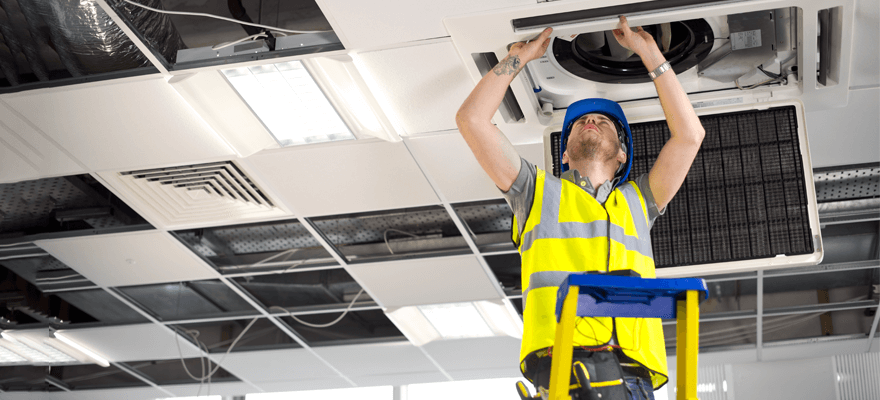Whether they’re carrying out maintenance on HVAC, elevators, alarm systems, water supplies or general building fittings & fixtures, lone workers can be alone for hours at a time. Sometimes on ladders, dealing with electrics, power tools, and other potential dangers. With all these risks in mind, it’s important that organisations take health and safety seriously. Anything that can improve the safety of employees and those around them should be considered, as it may save someone’s life, or make a critical difference to the outcome of a situation.
Sense’s system combines real time location technology with customisable workflows that can be integrated with other systems, to keep track of frontline lone workers when they are completing a job on site. Built-in communication allows managers to check-in with lone workers, and safety features such as SOS or fall detection notify the relevant people in real-time, improving response times to incidents.
One of the key pieces in this system is the Sense Badge. Sense Badges are wearable smart badges that can act as identification for employees and provide a whole host of features, functionality, and connectivity to empower frontline workers as they go about their work.
On top of providing key safety benefits, the Sense platform also enables location-stamped time and attendance, task management, as well as asset tracking. This means there is a clear audit trail of work being completed on time, and any equipment used.
Improving safety
Keeping engineers safe is a priority when working on site. Sense helps to monitor engineers’ safety using location, communication, and environmental sensor data. If something is not up to safety standards or an accident occurs, then alerts can be automatically triggered, or SOS messages sent. Sense can also integrate with other safety systems to provide a comprehensive wearable system that allows service providers to monitor the status of the systems that are in place, allowing engineers to react quickly and effectively, armed with the necessary insights.
Sense Badges also allow users to log their use of assets. Employees can report on the asset condition and request maintenance if necessary, improving safety for future equipment users. This can also help to prove employees signed out the correct safety equipment for a task. The system can go one step further and alert employees they have not got the safety equipment needed, for example before they are allowed to generate a task list, when beginning a particular task, or when entering a geofenced area.
Proving time & attendance
Being able to track and demonstrate time and attendance is important for three key reasons:
- To ensure you’re paying engineers properly for the time completed
- To ensure engineers are turning up for work when it is agreed, and taking appropriate breaks as required
- To demonstrate to customers that work was carried out as agreed
Ensuring staff are paid on time in full can help to improve engagement, productivity, and retention. In turn, this helps to encourage engineers to turn up on time to jobs and provide a high standard of service. Finally, being able to demonstrate to customers that work was carried out can streamline invoicing, prove service level agreements are adhered to, or even help to manage complaints if they arise.
Geofences can be set up to automatically log when a device wearing employee crosses a threshold to begin their work, and when they leave. Alternatively, employees can use biometric authentication to check themselves in and out on their Sense badges as and when required. These two methods of check in can be combined so employees can only check in when within a geofenced area, and out once they’ve left.
Integrations can also be used to create a system where Sense Badges can assist with entry to locations, checking employees in as they use their badge to unlock a door, or mark that they are beginning a task.
Managing tasks in real time
The Sense system can provide task lists within geofenced areas as employees arrive in real time. Tasks can be marked off for management to view and report on, even from remote locations. The time taken to complete a task can be logged, as well as the equipment used.
This helps inform building service providers how long a task may take when quoting in future, and what equipment is needed to fulfil the task.
Sense Badges give building service providers the option to send ad-hoc, or urgent tasks to engineers who are nearby on a site, meaning last minute requests or emergencies can be attended to quickly, minimising impact on the customer, increasing the level of service provided.
Conclusion
The Sense platform combines real time location with customisable workflows to improve the way building service providers manage their frontline. If you need to improve the way you manage frontline workers in building services, speak to Sense to book a demonstration today.







